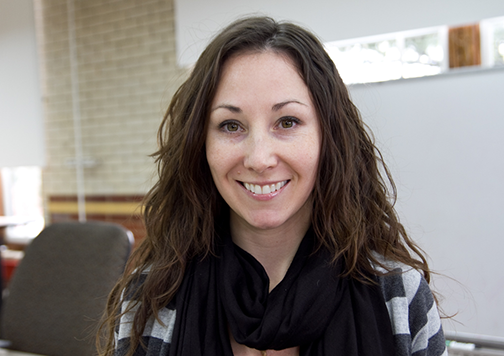
Safety and Environmental Impacts in Petroleum Industry
When you fill up your car with gasoline, you probably don’t stop to think about the process that the fuel took to get to you. Before fuel goes through the refining and distribution process, it’s extracted via complex wells constructed to great depths—a labor-intensive process that involves drilling and securing the well to prevent leakage. PhD student Eilis Rosenbaum, who is advised by Professor Kaushik Dayal, is researching foamed cement, which is used in wells all over the world, with the goal to improve safety practices in petroleum industry wells.
“I became interested in this project because it has immediate applications to industry,” Rosenbaum says. “The information we provide to the American Petroleum Institute is being implemented into their recommended practices to improve safety.”
Foaming the cement can be more economical and environmentally friendly compared to other methods to reduce cement density. Cement is used to seal the gap between a drilling well casing and a rock formation. While the equipment used to produce foamed cement is generally higher in cost, long-term cost savings and environmental advantages are seen with reduced material use. Other benefits of foamed cement include better ductility, which is especially important in geothermal wells, because it improves drilling mud displacement and better controls gas from migrating into the unset cement.
Adding gas bubbles to cement—usually nitrogen—lowers its density. But if the bubbles align in a string or cluster, channels could form in the cement. Rosenbaum’s research has shown that the cement flow affects the arrangement of the bubbles. Using simulations, she’s working to determine the conditions that cause the bubbles to structure in a manner that could form channels or lead to cracks in the cement.
“To determine properties such as viscosity, the forces between each bubble and all surrounding bubbles are calculated and summed together,” she says. With the large number of bubbles included in these simulations, a supercomputer must be used to run the simulations. Complicated interactions, called lubrication interactions, have been modified to be more like bubbles.
While her research is focused on the petroleum industry, the interactions she’s developing can be used to simulate any soft particles or bubbles in a suspension. “They will be incorporated into LAMMPS and may be used by anyone,” she adds. LAMMPS, the Large-scale Atomic/Molecular Massively Parallel Simulator, is an open-source classical molecular dynamics code developed by Sandia National Laboratories.